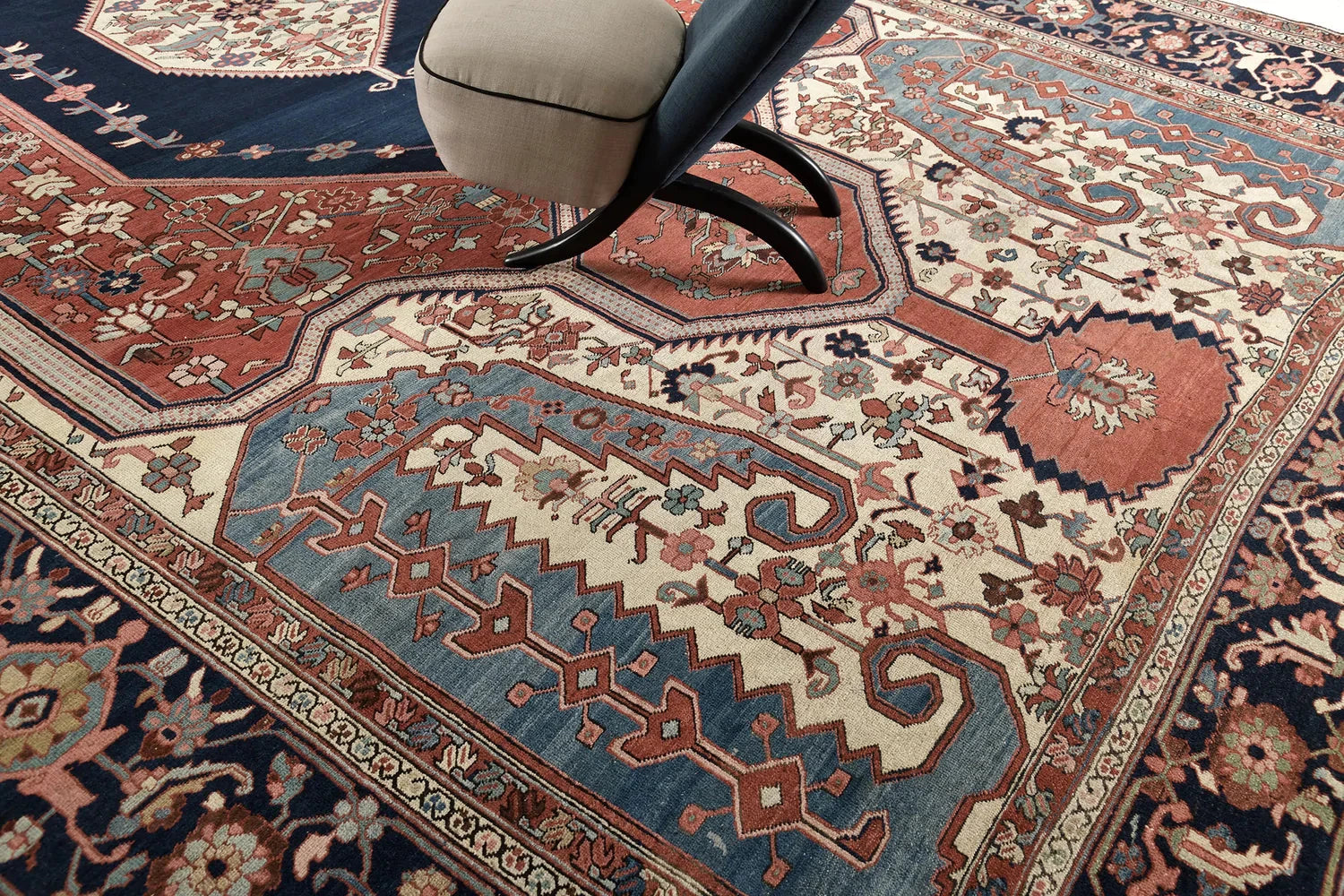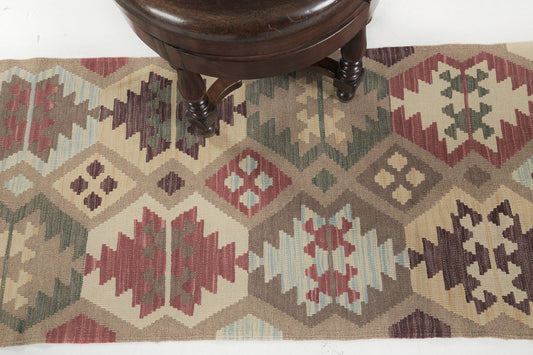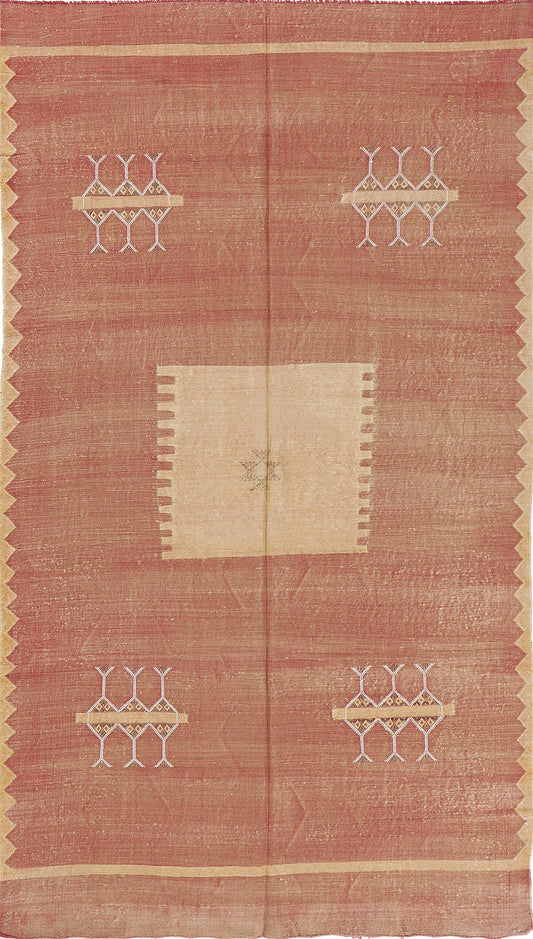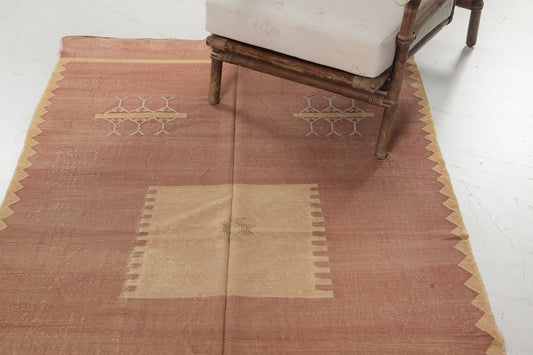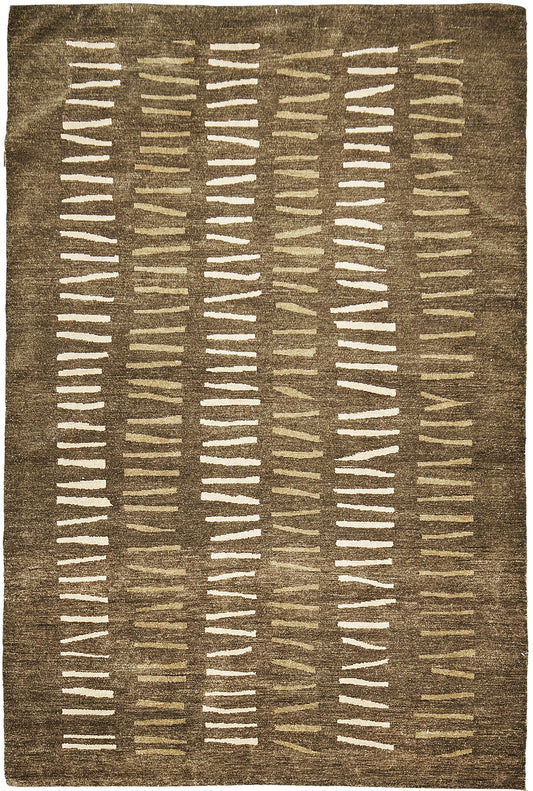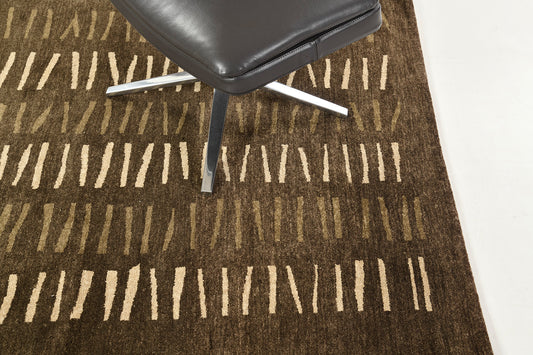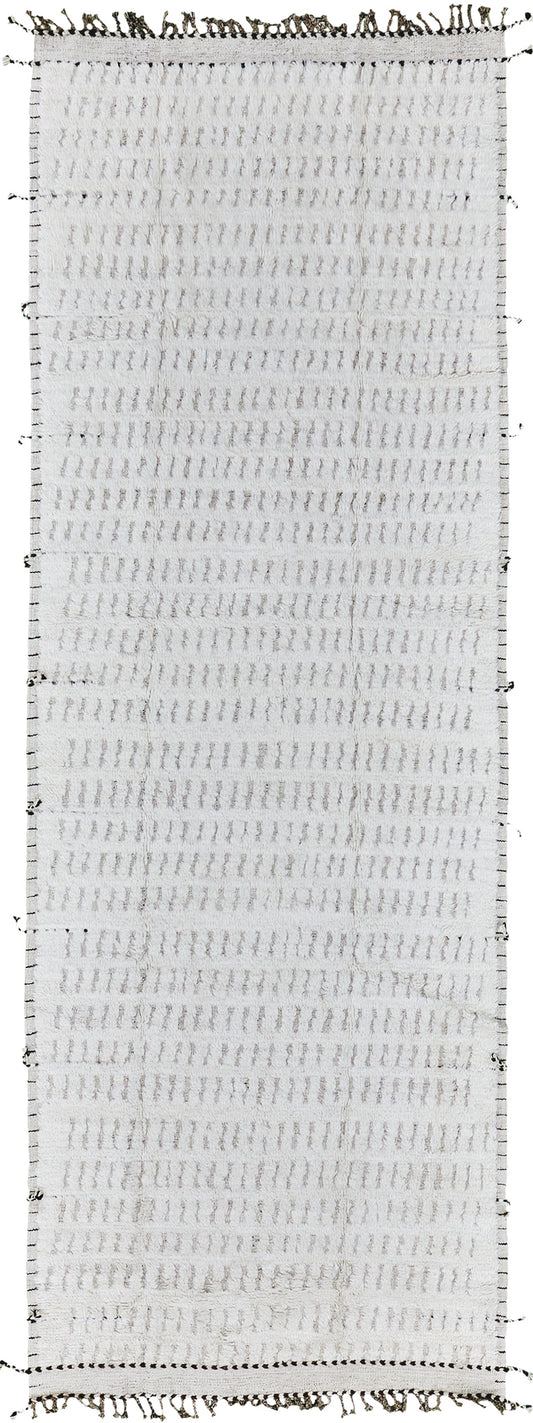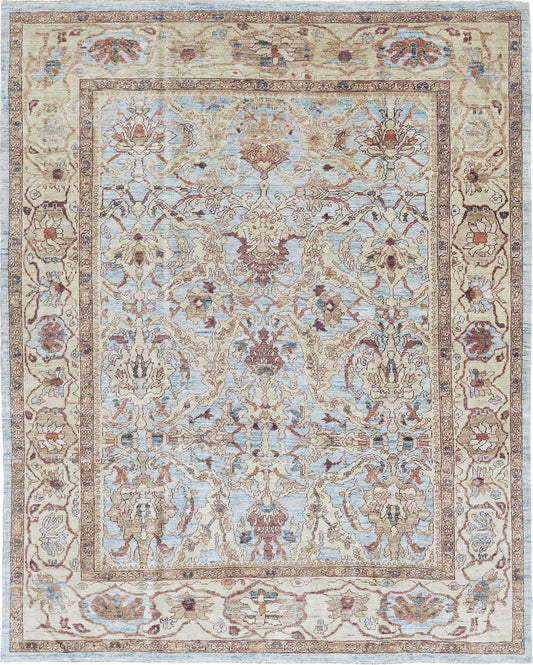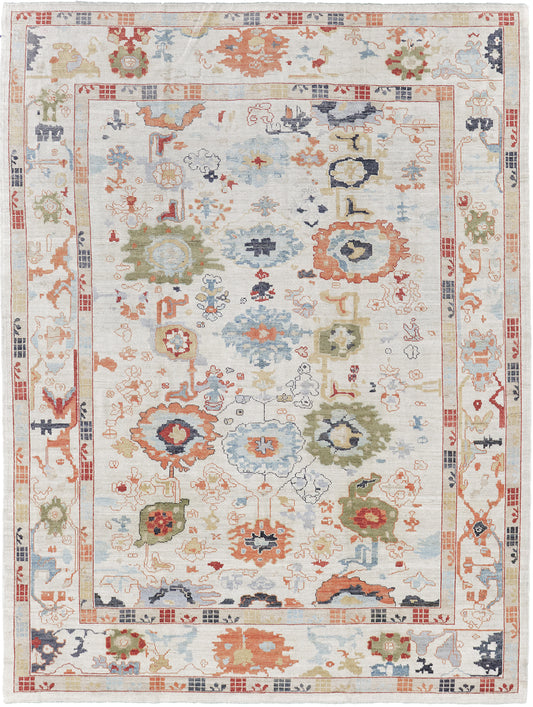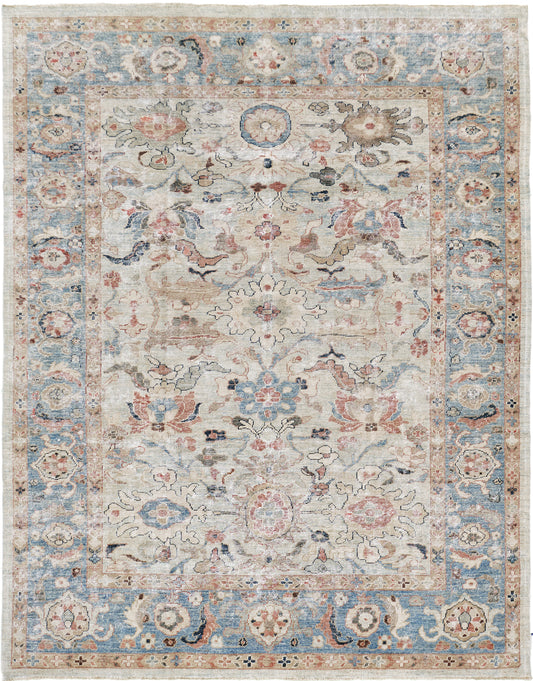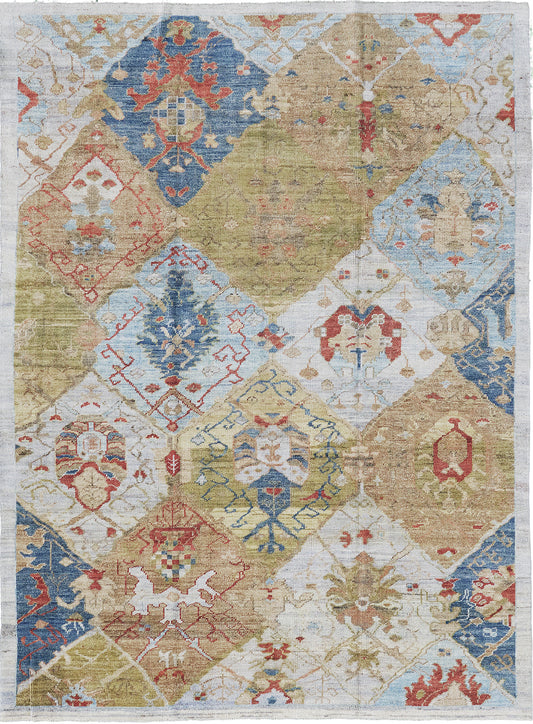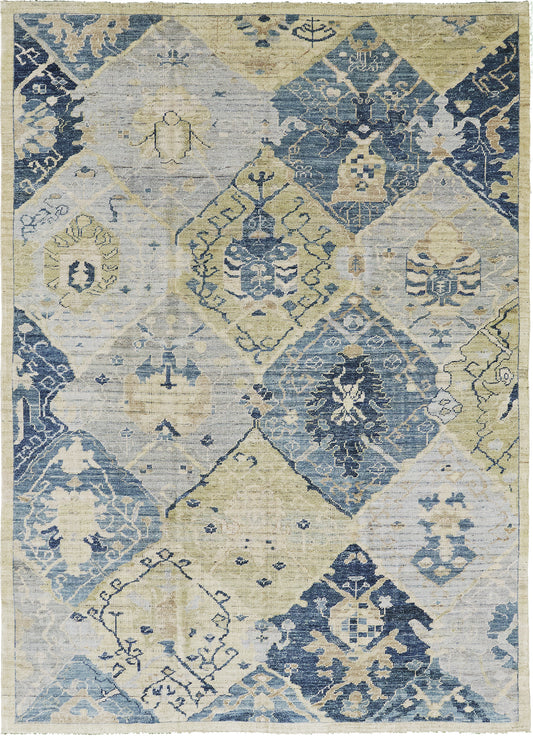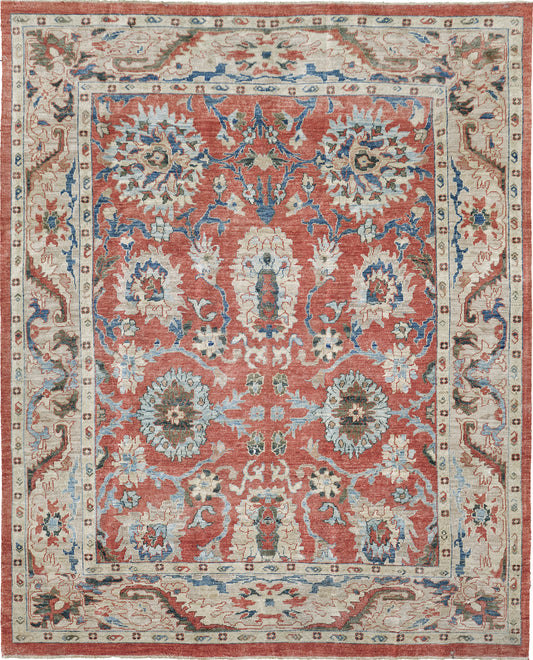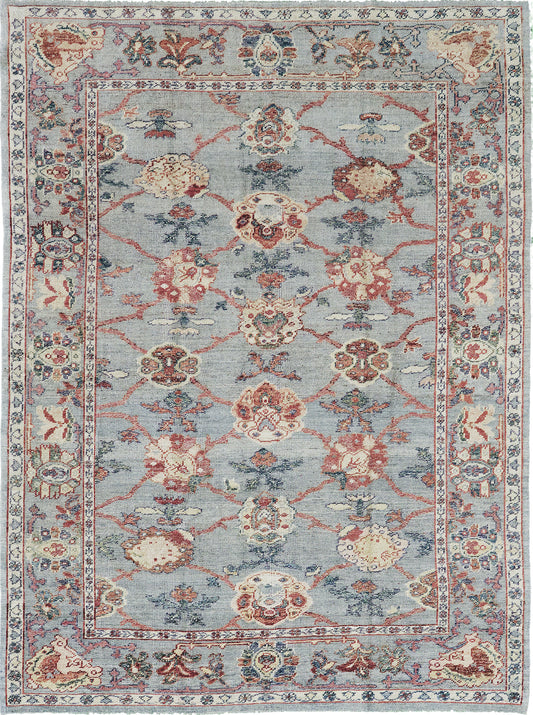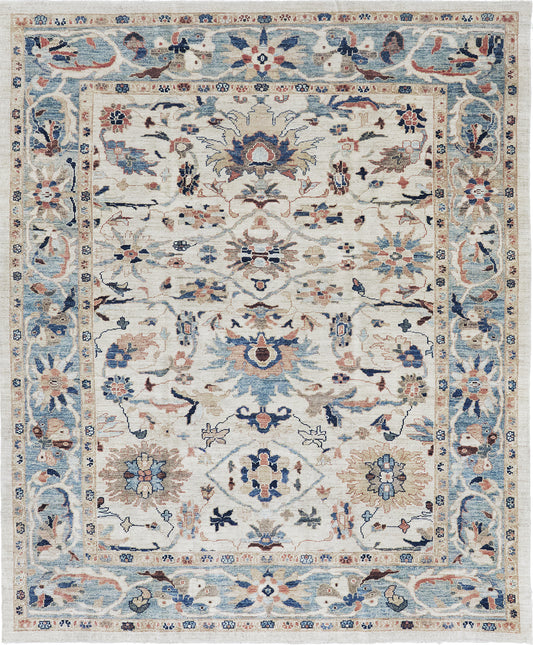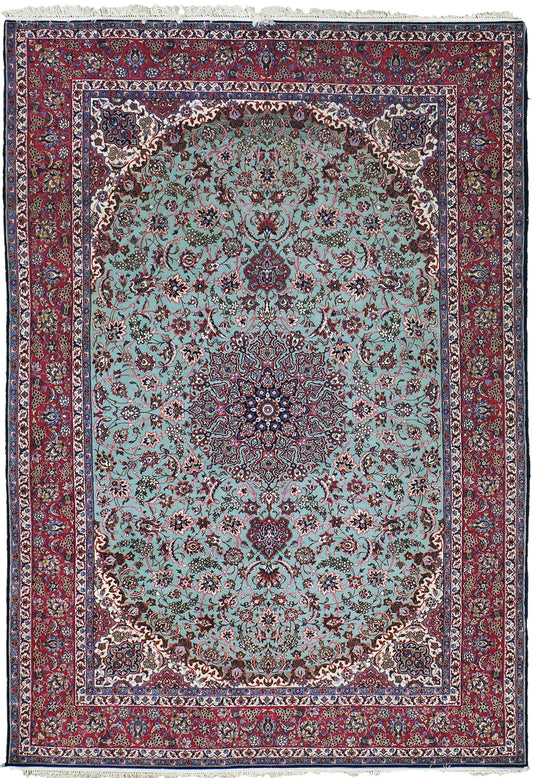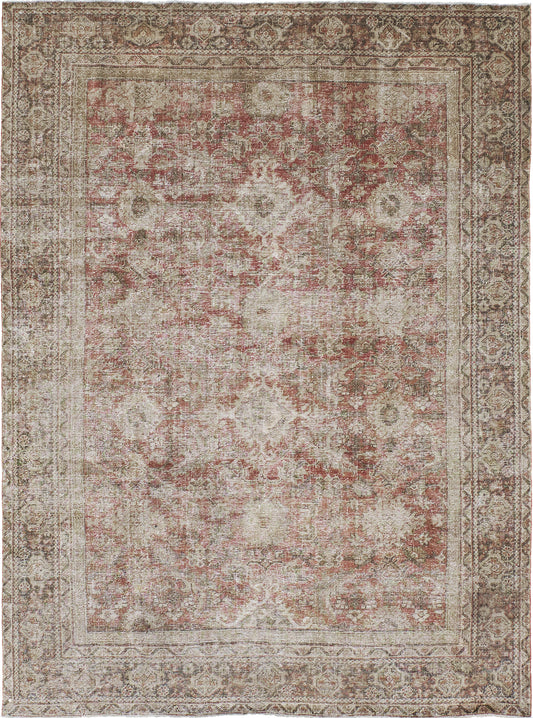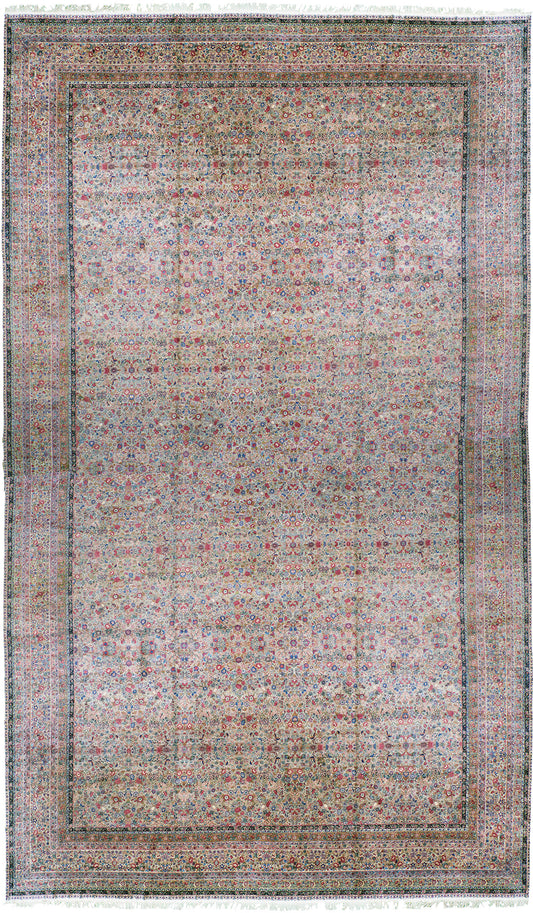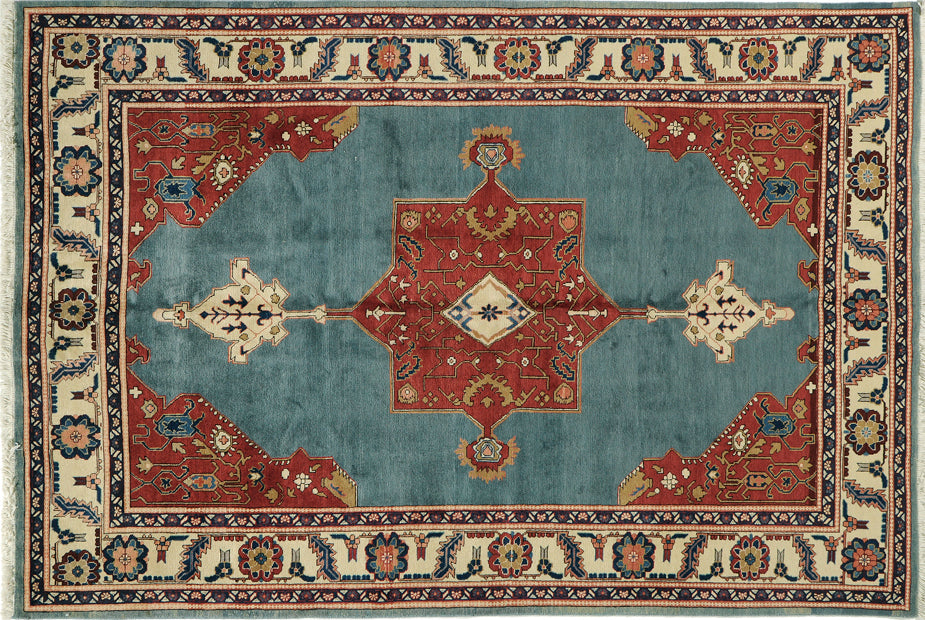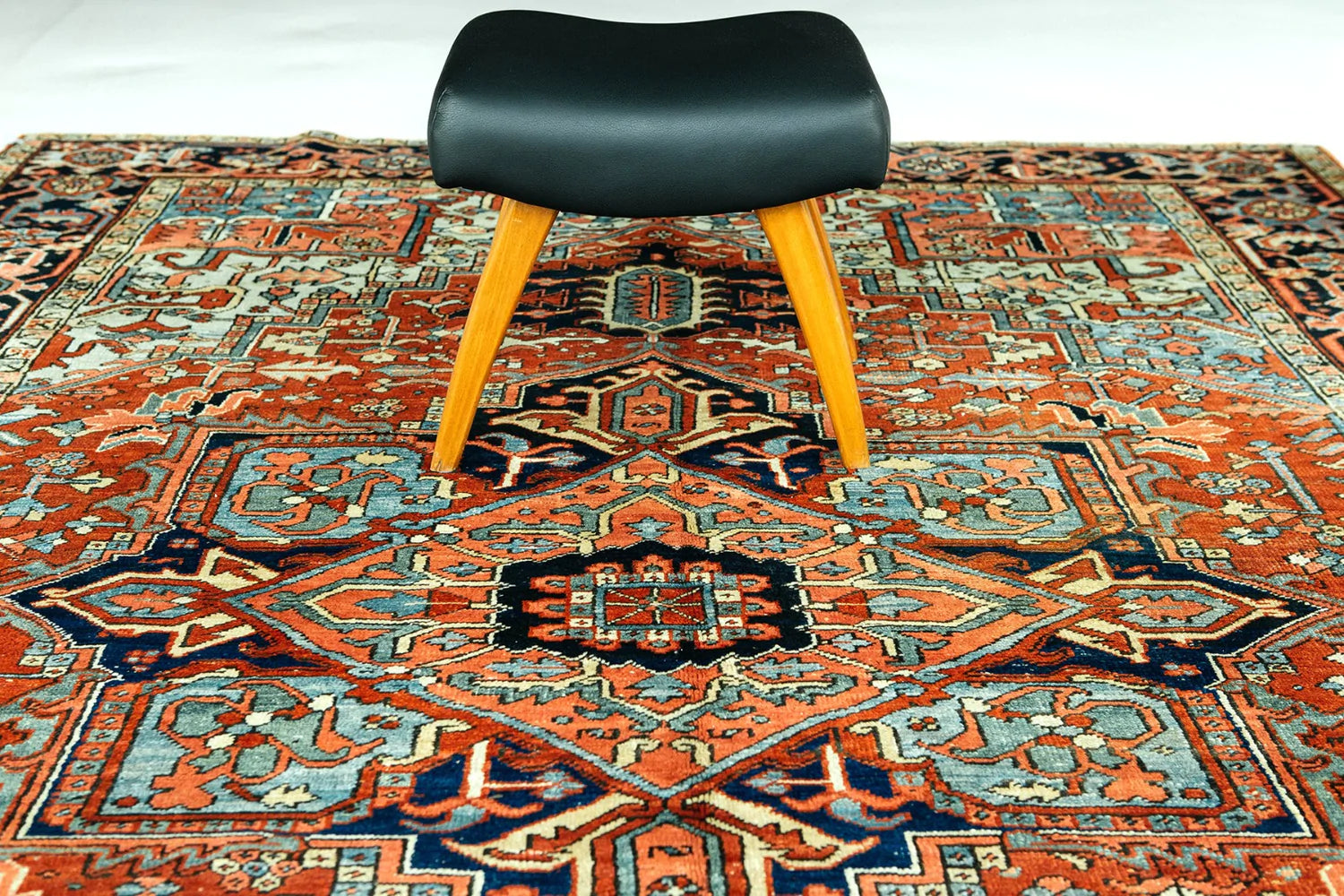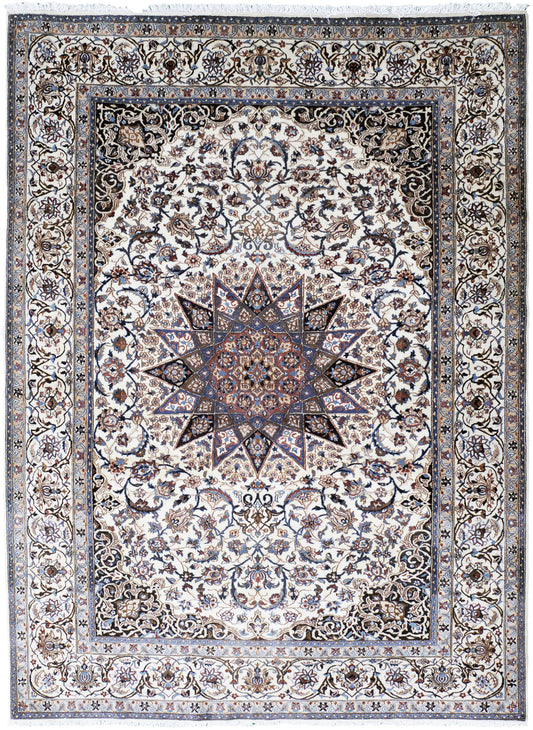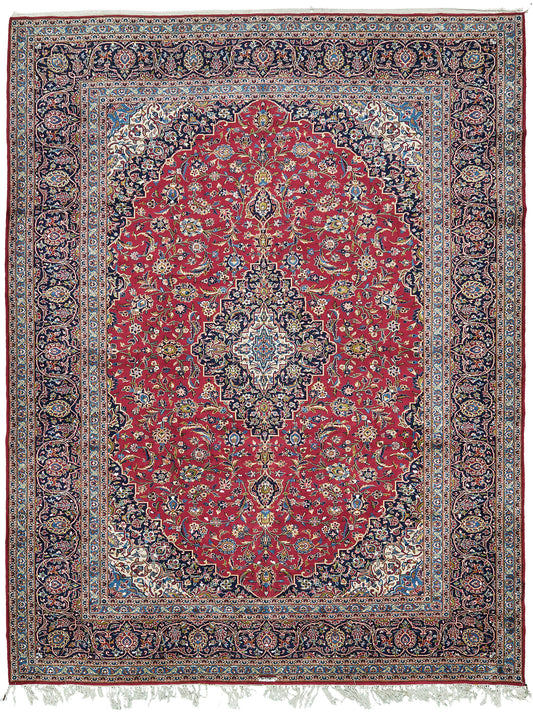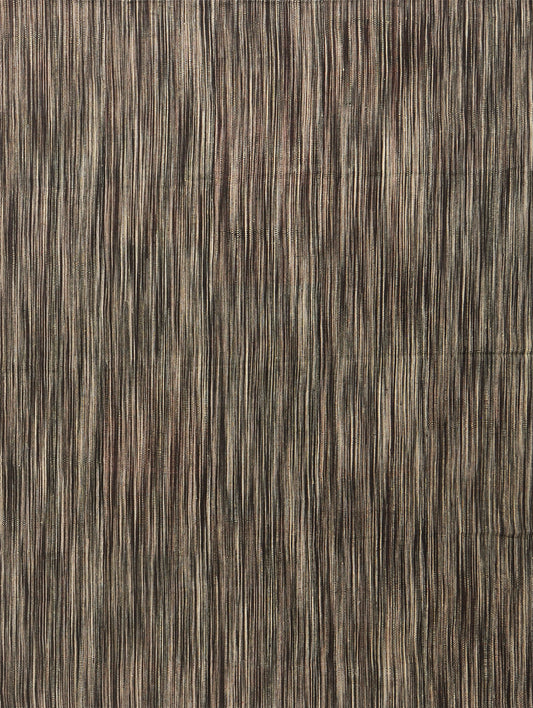-
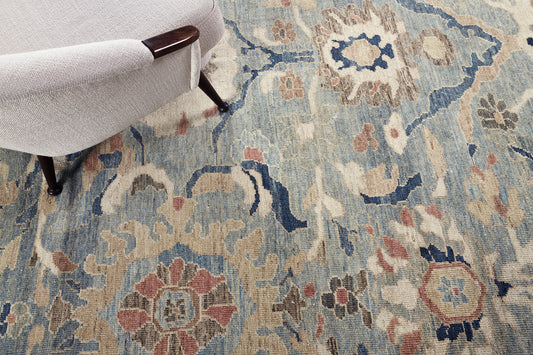 Sold out
Sold outtest product
Regular price $0.10 USDRegular price Sale price $0.10 USDUnit price perSold out -
Katabatic Runner, Haute Bohemian, Ivory Silver
Regular price $17,200.00 USDRegular price Sale price $17,200.00 USDUnit price per -
Barguzin Runner, Haute Bohemian, Ivory
Regular price $8,000.00 USDRegular price Sale price $8,000.00 USDUnit price per -
Barguzin Runner, Haute Bohemian, Ivory
Regular price $10,200.00 USDRegular price Sale price $10,200.00 USDUnit price per -
Barguzin Runner, Haute Bohemian, Ivory
Regular price $11,000.00 USDRegular price Sale price $11,000.00 USDUnit price per -
Sultanabad, Sultanabad Collection
Regular price $9,600.00 USDRegular price Sale price $9,600.00 USDUnit price per -
Sultanabad, Sultanabad Collection
Regular price $17,400.00 USDRegular price Sale price $17,400.00 USDUnit price per -
Sultanabad, Sultanabad Collection
Regular price $10,200.00 USDRegular price Sale price $10,200.00 USDUnit price per -
Sultanabad, Sultanabad Collection
Regular price $12,400.00 USDRegular price Sale price $12,400.00 USDUnit price per -
Sultanabad, Sultanabad Collection
Regular price $16,000.00 USDRegular price Sale price $16,000.00 USDUnit price per -
Sultanabad, Sultanabad Collection
Regular price $9,100.00 USDRegular price Sale price $9,100.00 USDUnit price per -
Sultanabad, Sultanabad Collection
Regular price $12,700.00 USDRegular price Sale price $12,700.00 USDUnit price per -
Sultanabad, Sultanabad Collection
Regular price $11,800.00 USDRegular price Sale price $11,800.00 USDUnit price per -
Lumi Runner by Jenni Lauri, Beige
Regular price $5,400.00 USDRegular price Sale price $5,400.00 USDUnit price per -
Lumi Runner by Jenni Lauri, Clay 2
Regular price $4,700.00 USDRegular price Sale price $4,700.00 USDUnit price per -
Lumi Runner by Jenni Lauri, Clay 1
Regular price $3,900.00 USDRegular price Sale price $3,900.00 USDUnit price per
Collapsible content
Learn more about Persian Rug Collection
The Beauty of a Persian Rug: Why They Continue to be an Interior Design Staple
Persian rug have a rich and complex history that is intrinsically linked to the culture and customs of the regions of Iran and surrounding countries. For centuries, these hand-crafted rugs have been used to add beauty and elegance to homes all over the world.
Typically made from wool or silk, these rugs feature intricate patterns and designs that reflect Persian culture and heritage. The history of Persian rugs is a fascinating story that is steeped in tradition and trade and dates back to the 6th century BCE.
In Persia, rugs were often used as currency, and they were exchanged as gifts between rulers. The popularity of these oriental rugs continued to grow, and by the 19th century, they were being exported to Europe and America and coveted by royalty and nobility all over the world. Today, Persian rugs are still highly prized works of art.
Handmade Rugs
A Persian rug is traditionally handwoven by highly skilled artisans, a process that can take months or years to complete. First, the weaver prepares a loom with the warp, the foundation into which the rug will be woven.
Then, the weaver knots each individual strand of wool or silk onto the warp. There are many variations in warp and knot structures used around the world. The motifs of a rug vary significantly across geography and time, and can be key in identifying a rug’s provenance using a variety of traditional patterns and colors.
As the rug starts to take shape, the weaver adds additional details, such as a central medallion and floral-shaped motifs known as Guls or Gols. Once the rug knotting is finished, the rug is removed from the loom, edges are bound, and the rug is washed and stretched. In commercialized productions, the rug undergoes a series of quality control tests to ensure that it meets the highest standards.
Persian rugs are made by a wide variety of methods, from the most traditional hand-knotting technique to more modern power-loomed methods. The quality of a Persian rug is determined not only by the materials used, but also the fineness of weave, and the skill of the artisans who creates it.
Rugs made with hand-spun wool and natural dyes will typically be of higher quality than those made with synthetic materials. As a result, Persian rugs can vary widely in price and quality.
Preparing the fibers
One of the secrets to the longevity of a fine Persian rug is the care that goes into preparing the fibers before they are woven. The process begins by sorting the fibers according to color and quality.
The best fibers are set aside for the rug's pile, while the others are used for the foundation and backing. The next step is to wash the fibers, which helps to remove any impurities and make them more pliable.
Once they are clean, the fibers are ready to be dyed. This is done using a variety of natural dyes, which give Persian rugs their characteristic rich hues. With the fibers dyed and sorted, the weaver can finally begin to create a work of art that will be enjoyed for generations to come.
Traditional dyes used on Persian Rugs
Rugs from Iran are renowned for their intricate designs, their high quality and vibrant and beautiful colors. Often made with natural dyes, their colors range from soft earth tones to rich jewel tones.
Weavers have been using natural dyes for centuries, and the traditional dyeing process is an integral part of Persian rug making. Common natural dyes used are madder root, walnut hulls and indigo, to create the treasured Blue Persian Rug.
Madder root typically produces shades of red, while indigo creates blues and greens. Walnut hulls produce a dark brown color that is often used to create contrast.
To dye the fibers for these exquisite rugs, the artisans must follow a painstaking process that has been passed down through generations. First, the wool, silk or cotton is soaked in a vat of lime water.
This prepares the fibers for dyeing and also helps to set the colors. Next, the fabric is dipped into the dye bath. The fibers are then placed in the sun to dry, before being washed in fresh water. This final step helps to ensure that the colors will not bleed or fade over time. Thanks to this labor-intensive process, Persian rugs are prized for their beauty, durability, and craftsmanship and last for decades with proper care. In addition, the tight weave helps to protect against wear and tear, while the dense pile helps to resist dirt and stains.
A persian rug is a beautiful and luxurious addition to any home. Not only do they add a touch of elegance and sophistication, but they are also a great investment as their value tends to appreciate over time.
What makes a Persian rug special?
A Persian rug stand out for their exceptional craftsmanship and symbolic designs. Each rug is hand-knotted with precision, often taking months—or even years—to complete. Patterns such as medallions, arabesques, and botanical motifs are steeped in history, carrying cultural significance that connects past generations to the present. The use of natural dyes and high-quality wool or silk ensures both beauty and longevity, making Persian rugs heirloom pieces that age gracefully.
Are Persian rugs handmade?
Yes, an authentic Persian rug is always handmade, using techniques passed down through generations of artisans. Every knot is tied by hand, creating subtle variations that add to the rug’s uniqueness. Unlike machine-made rugs, which are uniform and mass-produced, handmade Persian rugs showcase the weaver’s skill and creativity—resulting in one-of-a-kind works of art that cannot be replicated.
What types of Persian rugs exist?
Persian rugs come in many regional styles, each with its own identity. The most well-known types include:
-
Tabriz Rugs – Famous for their fine knots and intricate designs, often featuring central medallions.
-
Kashan Rugs – Known for rich reds and blues, with elegant floral motifs.
-
Heriz Rugs – Recognized by bold geometric patterns and strong durability, ideal for everyday use.
-
Qom Rugs – Woven from silk, these rugs are prized for their luminous sheen and delicate artistry.
-
Gabbeh Rugs – Simple, tribal rugs with abstract designs, often in bold colors.
This diversity allows collectors and homeowners to find a rug that matches both personal taste and interior style.
How do Persian rugs fit into modern interiors?
Persian rugs bring warmth, texture, and sophistication to modern interiors by serving as both functional floor coverings and artistic statements. In minimalist spaces, they add color and depth; in eclectic or bohemian rooms, their intricate patterns layer beautifully with other elements. Designers often place them in living rooms, dining areas, or bedrooms as anchor pieces that tie the entire design together. Even in contemporary homes, Persian rugs seamlessly bridge tradition with modern aesthetics.
How should I care for a Persian rug?
Caring for a Persian rug begins with simple, consistent practices. Vacuum regularly to prevent dirt from settling into the fibers, and rotate the rug every few months to ensure even wear. Keep rugs out of direct sunlight to preserve the vibrancy of natural dyes, and schedule professional cleaning every 1–2 years. With proper care, a Persian rug not only retains its beauty but also becomes more valuable over time, making it an investment as much as a design choice.
Why choose Mehraban for Persian rugs?
Mehraban is trusted for sourcing authentic, high-quality Persian rugs that blend history with modern design needs. Our collection spans both traditional masterpieces and rare finds, ensuring that every piece is hand-selected for its artistry, durability, and beauty. By working directly with collectors and artisans, we bring you rugs that are both culturally significant and perfectly suited for your space. When you choose Mehraban, you’re choosing expertise, authenticity, and timeless elegance.
How can I tell if a Persian rug is authentic?
Look for hand-knotted construction, natural dyes, and slight irregularities in the weave—these are hallmarks of authenticity. Buying from a reputable source like Mehraban ensures quality.
Are Persian rugs valuable?
Yes, Persian rugs are considered valuable due to their craftsmanship, natural materials, and cultural heritage. Over time, many even appreciate in value.
What materials are Persian rugs made from?
Most are made from wool, silk, or a combination of both. Wool rugs are durable and soft, while silk rugs are luxurious with a distinctive sheen.
Can Persian rugs work in small spaces?
Absolutely. Persian rugs come in all sizes, from runners to large room pieces, making them versatile for hallways, bedrooms, or intimate seating areas.
How long do Persian rugs last?
With proper care, Persian rugs can last for generations, often being passed down as family heirlooms.
Discover Mehraban’s Persian Rugs Collection
A Persian rug is more than décor—it’s a living piece of art that elevates your home. At Mehraban, we offer a curated selection of Persian rugs that combine authenticity, craftsmanship, and timeless style. Browse our collection online or visit our showroom to find the perfect piece that speaks to your story.
Discover our Curated Collection of Green Persian Rugs and Red Persian Rugs
Persian Rug Styles
Our collections curate the most sought after trends, styles and colors of handmade Persian Rugs.
Hailing from the vibrant city of Tabriz in the East Azerbaijan province of Iran , these rugs epitomize luxury and sophistication. Crafted with meticulous care, Tabriz rugs feature high-quality wool or a blend of wool and silk, with a lustrous silk or cotton foundation. Their designs range from captivating hunting scenes to intricate medallions, found in museum-worthy antique pieces that are treasured around the world.
Mehraban’s Antique Persian Tabriz
The captivating Antique Persian Tabriz Rug is a true treasure that exudes elegance and grace. Crafted with meticulous care and precision, this rug showcases the renowned Tabriz design, known for its intricate patterns and exquisite craftsmanship. Made from high-quality wool, it boasts a plush pile weave that offers a luxurious texture underfoot.
Originating from Iran, the birthplace of Persian rug artistry, this antique masterpiece carries a rich history and cultural significance. Its age lends a sense of authenticity, making it a true collector's item for rug enthusiasts and connoisseurs.
Collapsible content
Learn more about our Persian Rug Styles
Heriz Rugs
With their distinctive bold patterns and vibrant colors, Heriz rugs make a striking statement. The centerpiece of a Heriz rug is a large medallion surrounded by intricately designed corners. Known for their durability, these rugs are crafted to withstand the test of time while infusing any space with warmth and character.
Kashan Rugs
These rugs are renowned for their elegant floral motifs and captivating color palettes. A signature feature of Kashan rugs is their patterned floral field, embellished with a medallion and unique corner designs. Ivory, rich red, and deep blue dominate the color scheme, complemented by occasional bursts of green, yellow, or burnt orange, creating a harmonious visual symphony.
Gabbeh Rugs
In the Zagros Mountains, Gabbeh rugs are woven by skilled Luri and Qashqai weavers. Reflecting a heavy tribal influence, these rugs are characterized by their thick and coarse texture, crafted using handspun wool. Simple yet captivating, Gabbeh rugs feature minimalistic designs on a plush, solid-colored field, radiating warmth through hues of yellow, red, orange, or rust, all derived from natural dyes.
Isfahan Rugs
These masterpieces are meticulously woven using high-quality wool on a foundation of silk or cotton. With a higher knot count and dense construction, Isfahan rugs exude unparalleled luxury. Their symmetrical and balanced designs often showcase a single medallion in shades of rose, blue, or indigo, set against an ivory backdrop and adorned with delicate vine motifs.
Nain Rugs
Nain Rugs are famous for their exquisite texture and meticulous craftsmanship. These rugs feature the finest wool and boast an impressive knot count ranging from 300 to 700 knots per square inch. Delicate and intricately patterned, Nain rugs often showcase branches of green or blue intertwined with small flowers on a light ivory or white background, creating a serene and elegant ambiance.
Mehraban’s Extra Fine Persian Nain 6 ply
The extraordinary Extra Fine Persian Nain 6 ply Rug is a true masterpiece that embodies luxury and sophistication. This rug is the epitome of refinement, elevating any space with its exquisite presence.
Impeccably crafted with meticulous attention to detail, this rug showcases the iconic Nain design, known for its intricate floral patterns and timeless elegance. The combination of wool and silk creates a lustrous texture, adding a touch of opulence to the overall aesthetic.
Despite its new age, it honors the rich heritage and techniques of the finest Persian rugs, ensuring its place among the most prized possessions of discerning collectors.
Hamedan Rugs
The city of Hamedan, nestled within the Zagros Mountains, has long been revered as a hub for rug production. Its strategic location along ancient trade routes fostered a vibrant exchange of ideas and techniques, resulting in the development of unique rug designs exclusive to the region. One of the most prominent design elements found in Hamedan rugs is the central medallion. These medallions can vary in shape, from hexagonal to diamond or even octagonal, and are surrounded by intricate floral patterns and borders. They serve as the focal point of the rug, drawing the viewer's attention and adding a sense of symmetry and balance to the overall composition.
Mehraban’ featured Vintage Persian Hamedan
A true masterpiece of timeless beauty and craftsmanship, the Vintage Persian Hamedan Rug is an exceptional rug. It showcases the distinctive Hamedan design, known for its captivating motifs and intricate details.
This rug commands attention and transforms any space into a sanctuary of elegance. Crafted from high-quality wool, it boasts a luxurious texture and a pile weave that invites you to sink your feet into its softness.
Originating from Iran, the birthplace of Persian rug artistry, this vintage gem carries the weight of history and cultural significance. Its age lends a sense of authenticity and character, telling stories of the past and preserving the legacy of Persian rug craftsmanship.
Cultural Heritage and Global Influence
At the heart of Persian rug style lies a rich tapestry of cultural heritage and global influence, transcending mere aesthetics to embody the spirit of Persian art and design.
Persian rug style encompasses a deep-rooted cultural heritage and wields a profound global influence, transcending aesthetics to embody the spirit of Persian art and design. This captivating journey unveils the significance of Persian rugs, delving into their cultural value and impact on the world of interior design.
Within the realm of traditional Persian society, rugs held a revered position beyond their functional purpose. They were symbols of status, prosperity, and taste.
Owning a Persian rug signifies an appreciation for fine craftsmanship and an understanding of the intricate artistry woven into each design.
Passed down through generations, these rugs became cherished family heirlooms, evoking a sense of connection to ancestral roots and preserving cultural identity.
However, the allure of Persian rugs extends far beyond the borders of Iran. Their breathtaking beauty and intricate craftsmanship have mesmerized art enthusiasts and collectors worldwide.
The global appeal of Persian rugs lies in their ability to transcend time and cultural boundaries, captivating individuals with their exquisite designs and timeless elegance.
Persian rugs have left an indelible mark on the world of interior design, inspiring countless trends and styles. Their influence can be witnessed in homes, hotels, and design spaces around the globe.
From luxurious palaces to contemporary residences, Persian rugs bring an air of sophistication and refinement to any setting.
The versatility of Persian rugs is an attribute that sets them apart. Their intricate patterns, vibrant colors, and meticulous craftsmanship effortlessly harmonize with various design aesthetics. Whether it is a traditional interior seeking to embody authenticity or a contemporary space longing for a captivating focal point, Persian rugs seamlessly integrate into diverse design styles.
Beyond their visual allure, Persian rugs carry stories and symbols deeply ingrained in their motifs. Floral patterns represent the abundance of nature and serve as an homage to the Persian love for gardens.
Geometric designs symbolize cosmic harmony and spiritual balance. Each rug is a testament to the cultural values and artistic expressions of its weaver, serving as a canvas where history and creativity converge.
The impact of Persian rugs extends well beyond individual spaces. These masterpieces have become ambassadors of Persian culture, capturing the imaginations of people across borders and continents.
Their presence in museums and exhibitions showcases the exceptional skill of Persian weavers and celebrates the profound artistic legacy they have left behind.
Red Persian Rugs
-
Antique Persian Quashghaei Bag Face
Regular price $950.00 USDRegular price Sale price $950.00 USDUnit price per -
Fine Vintage Persian Isfahan
Regular price $7,500.00 USDRegular price Sale price $7,500.00 USDUnit price per -
Antique Persian Mahal
Regular price $9,750.00 USDRegular price Sale price $9,750.00 USDUnit price per -
Antique Persian Kerman
Regular price $85,000.00 USDRegular price Sale price $85,000.00 USDUnit price per
More Collections of Persian Rugs
-
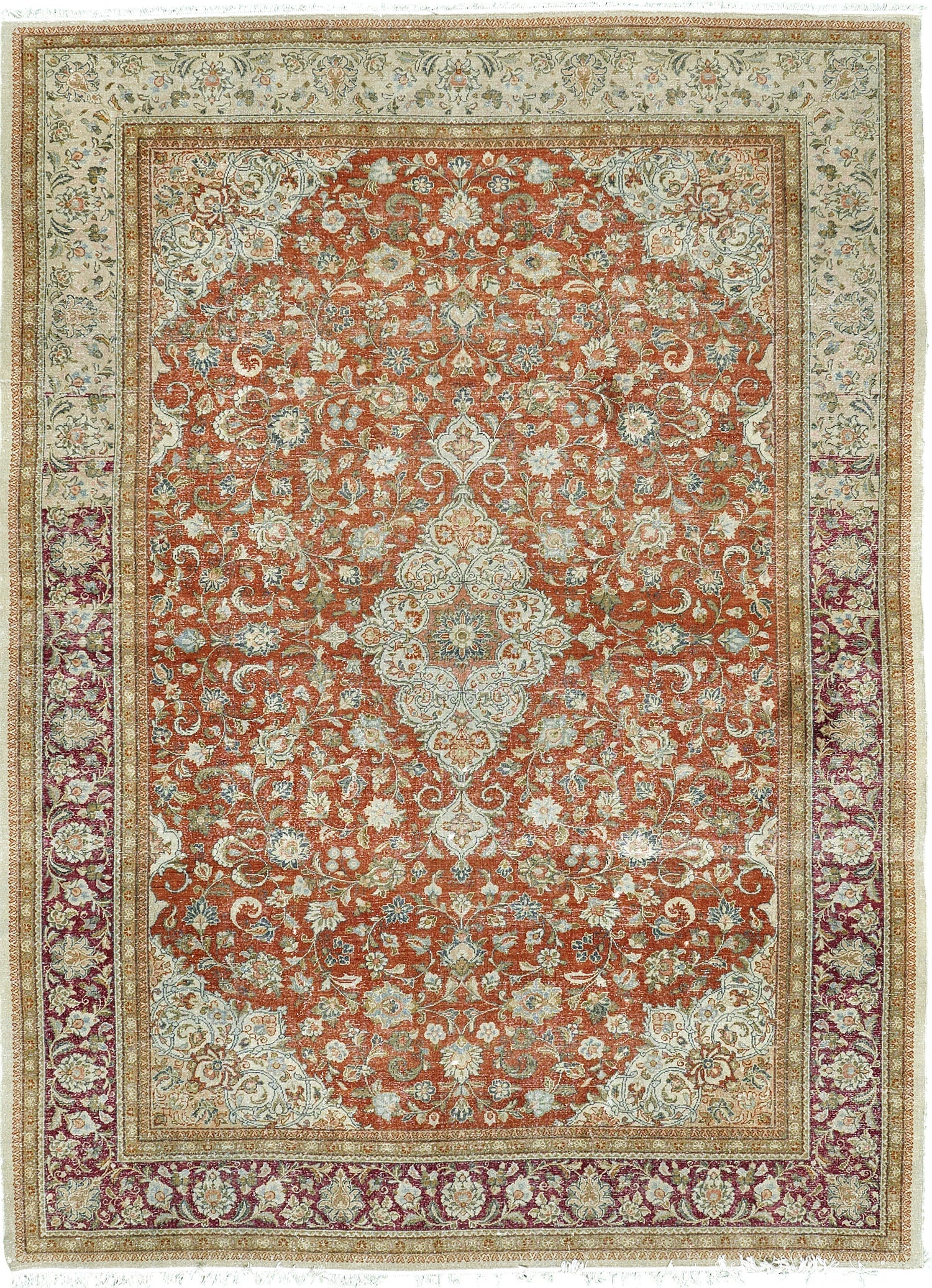
Fine Persian Rugs
Discover all our Persian Rugs
-
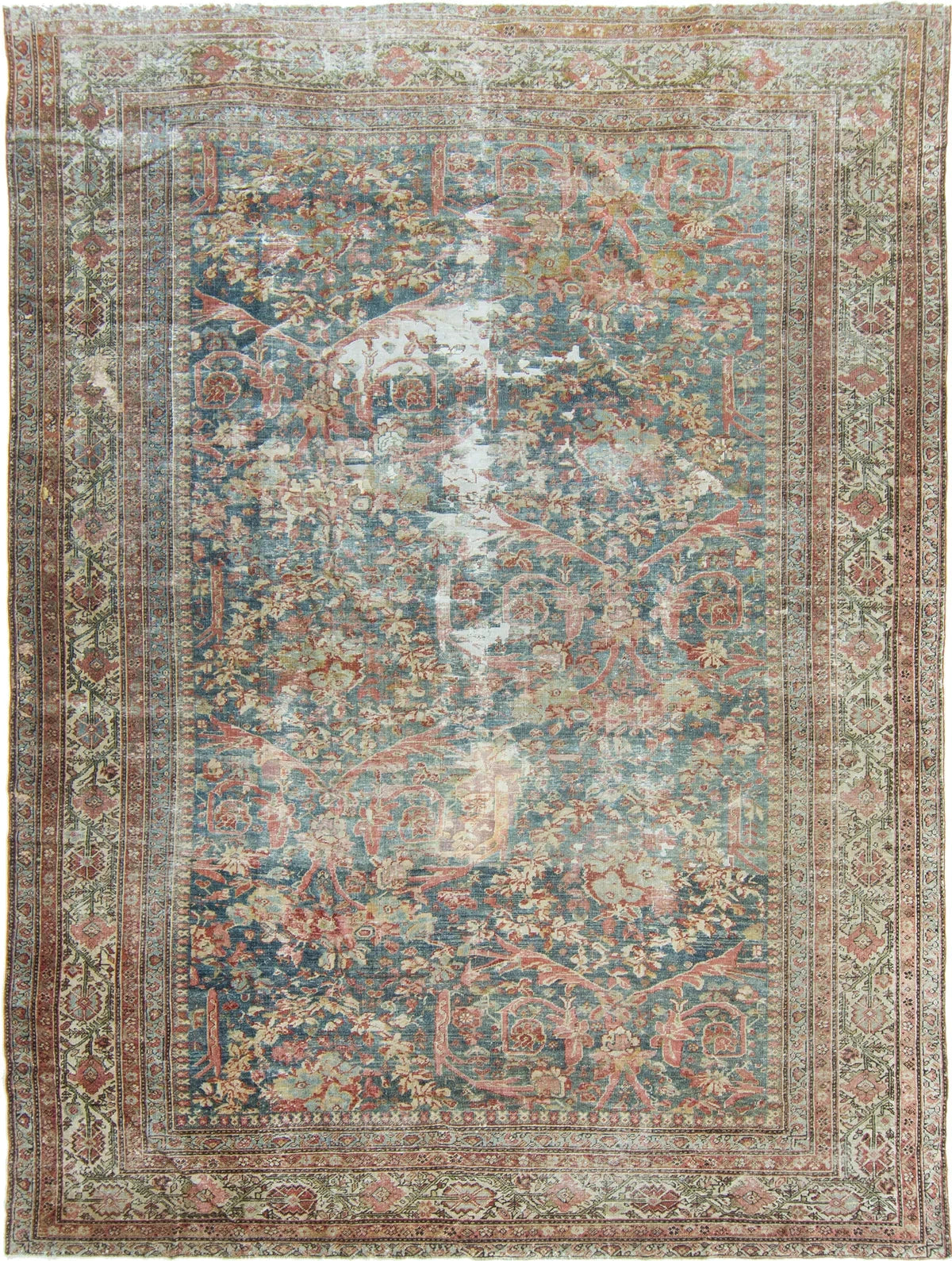
Distressed Persian Rugs
Distressed Persian Rugs — The Timeless Trend In The Interior Design World...
-
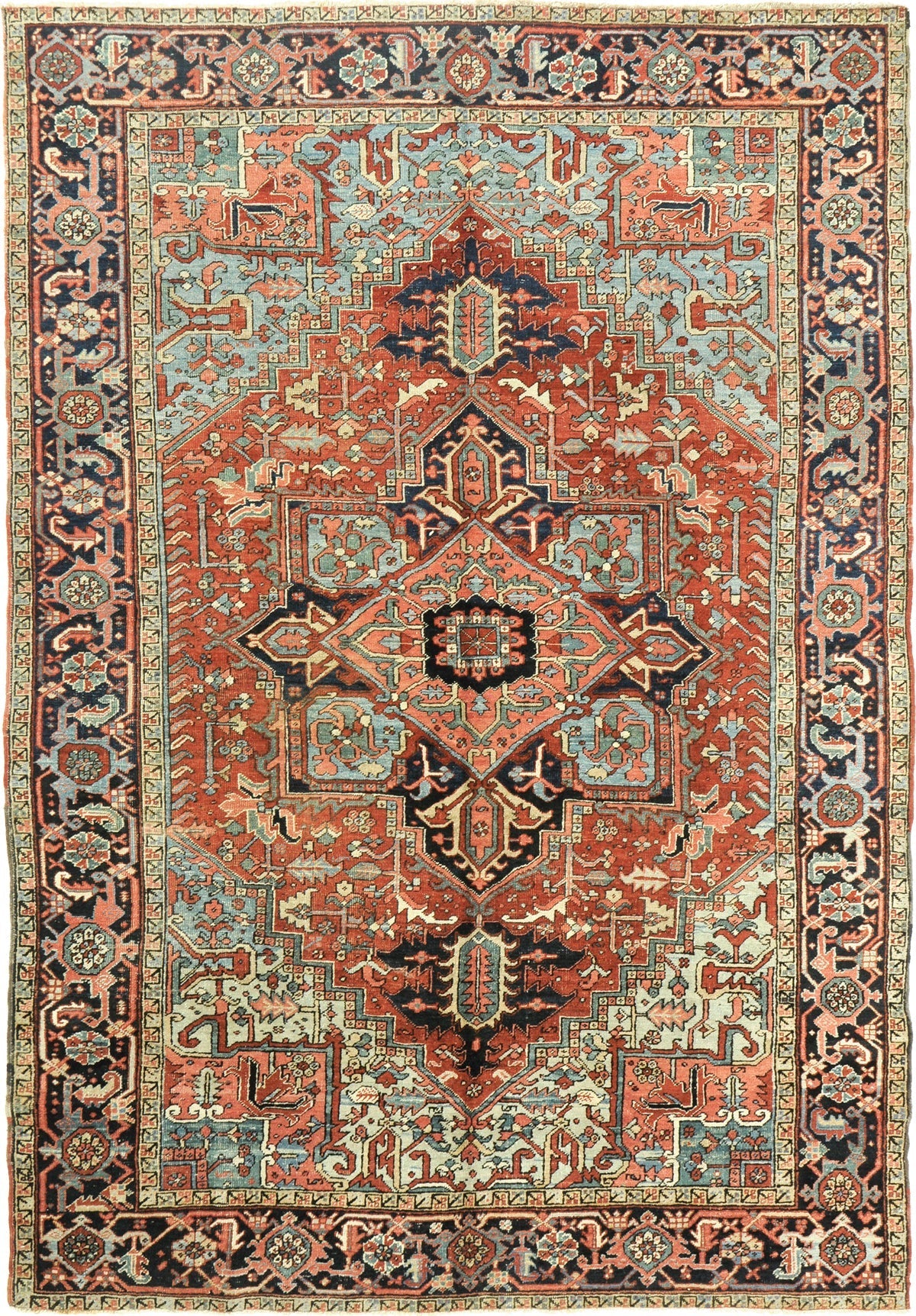
Heriz Rugs and Serapi Rugs
Heriz Rugs and Serapi Rugs: Their Origin and History Heriz rugs and...
-
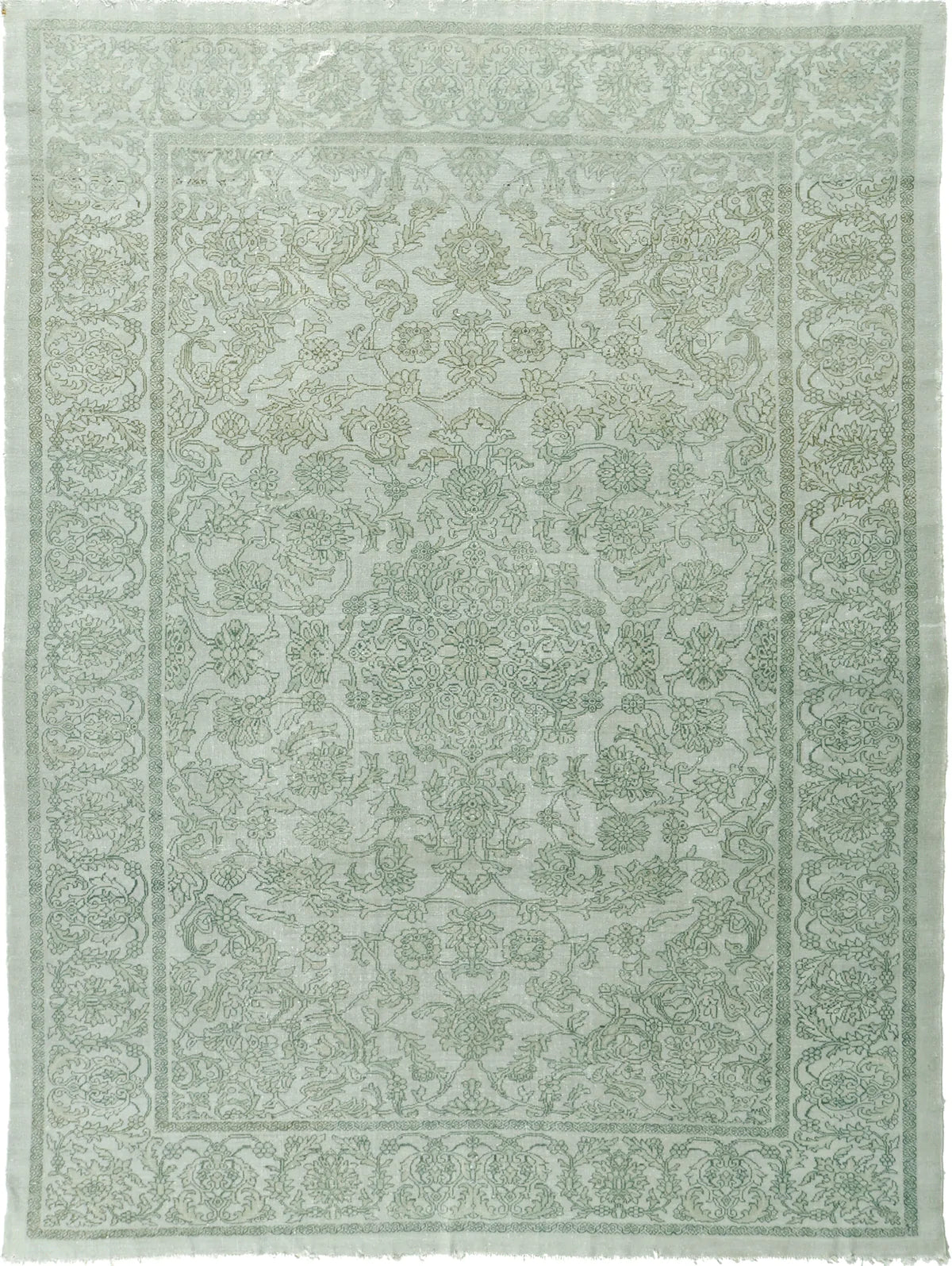
Green Persian Rugs
The History of Green Persian Rugs Green Persian rugs are prized for...
-

Pink Persian Rugs
In the world of Persian rugs, the infusion of pink hues unveils...
-
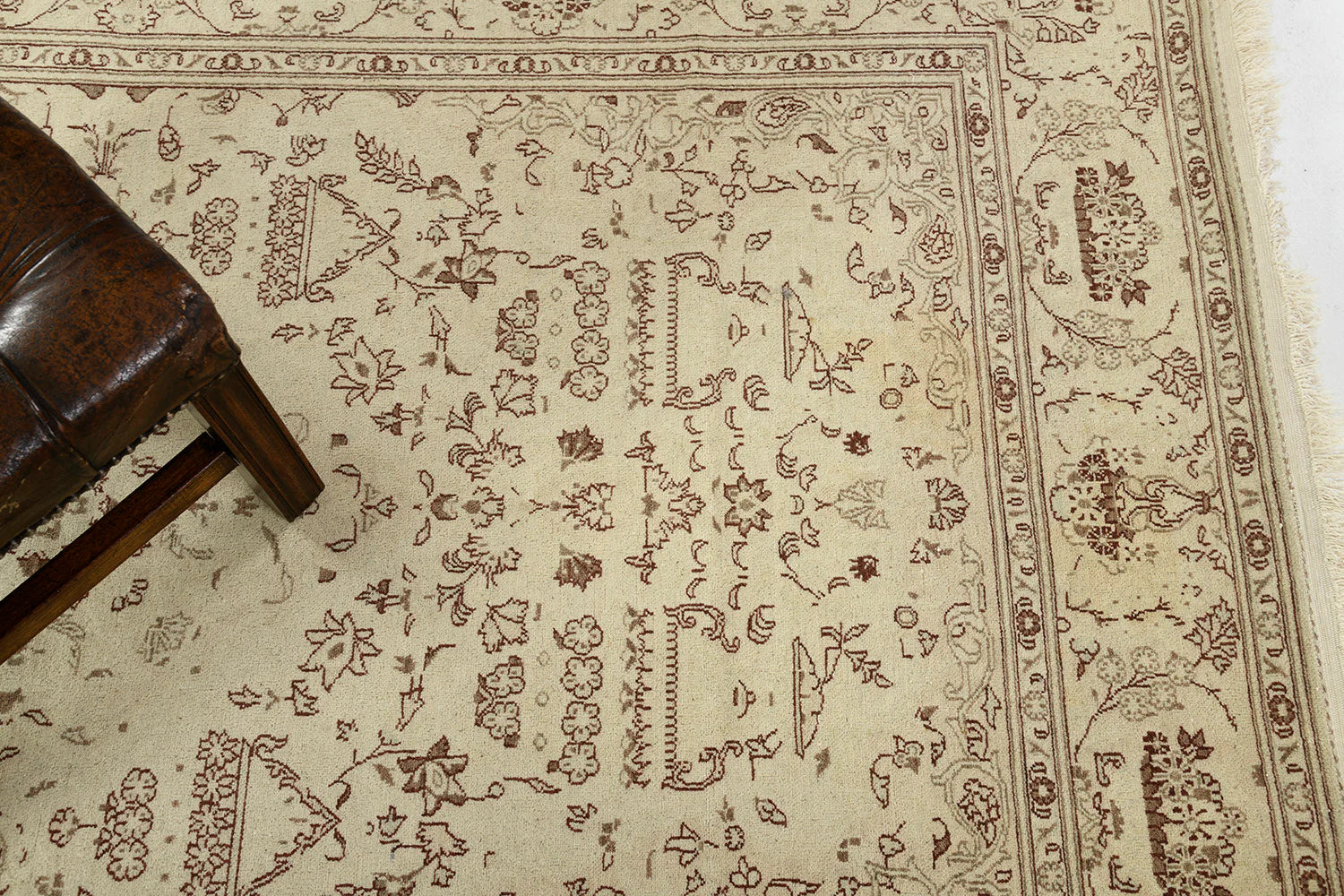
Cream Persian Rugs
Have you ever wondered how to make your home feel more inviting...
-
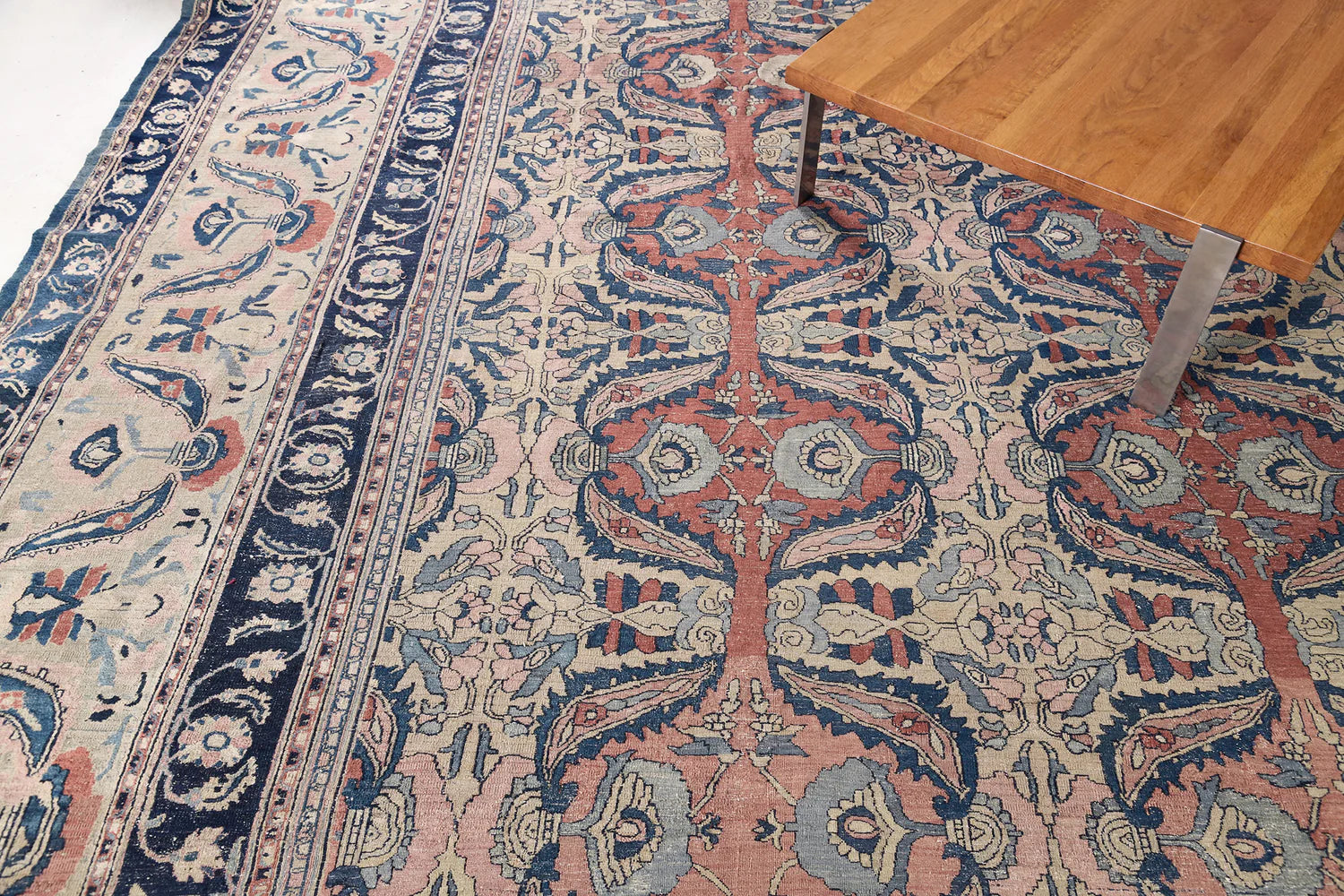
Antique Persian Rugs
Antique Persian rugs are hand woven carpets that were made in Iran...
Collapsible content
All you need to know about Rugs from Iran
Rugs from Iran: A Timeless Tradition of Craftsmanship
Iran, formerly known as Persia, has been the center of exquisite rug-making for centuries, with Iranian rugs revered around the world for their beauty, craftsmanship, and cultural significance. The unique appeal of these rugs lies in their rich history, traditional weaving techniques, diverse styles, and the vibrant regional rug centers scattered across the country. Here’s an in-depth look at what makes rugs from Iran so special.
A Rich History of Persian Rugs
The history of rug-making in Iran dates back over 2,500 years, with the art form evolving through the influence of various dynasties and cultures. Some of the oldest surviving examples, such as the Pazyryk rug, found in a Siberian tomb and believed to date back to the 5th century BCE, illustrate the deep roots of Iranian rug artistry.
Throughout the centuries, Persian rugs were not merely utilitarian items but were deeply intertwined with the social, political, and religious fabric of Iran. Dynasties like the Safavids (1501–1736) were particularly instrumental in elevating rug weaving to a national art, with Shah Abbas I establishing royal workshops and encouraging artisans to refine and expand their techniques. This era saw the creation of many of the timeless designs and motifs that define Persian rugs today.
Traditional Weaving Techniques
Iranian rugs are hand-woven using ancient techniques passed down through generations. Every knot is tied with precision, often using a method known as the Persian or asymmetric knot, which allows for greater detail and intricacy in patterns. These rugs can have up to a million knots per square meter, reflecting the extraordinary craftsmanship behind each piece.
The wool, silk, and cotton fibers used in Persian rugs are meticulously sourced, with wool often coming from local sheep breeds and silk used in more luxurious pieces. The dyeing process is just as traditional, employing natural dyes derived from plants, roots, insects, and minerals to create the vibrant yet earthy color palettes that define these rugs.
#### Diverse Styles of Iranian Rugs
Iranian rugs come in an array of styles, each with its unique character. Some of the most famous styles include:
Isfahan Rugs: Known for their precise designs and floral patterns, Isfahan rugs often feature a central medallion surrounded by intricate arabesques and delicate flower motifs. The city’s rug weavers are considered some of the finest in the country.
Kashan Rugs: Kashan is another renowned center of rug production, famous for its finely knotted wool or silk rugs with traditional Persian designs. These rugs often incorporate royal blue, deep red, and ivory tones with elaborate patterns featuring florals and medallions.
Tabriz Rugs: Originating from one of the oldest rug-weaving centers, Tabriz rugs are known for their wide variety of designs and high knot density. They frequently feature hunting scenes, vine motifs, and geometric designs, making them highly sought after by collectors.
Heriz Rugs: These are more rustic and bold in design, typically featuring large geometric medallions and stylized floral patterns. Their sturdy construction and durable wool make them ideal for high-traffic areas.
Qashqai Rugs: These tribal rugs, created by nomadic peoples, are known for their lively, geometric designs and vibrant color schemes. Each piece is unique, reflecting the personal creativity and heritage of the weavers.
Major Rug Centers in Iran
Iran is home to several important rug-weaving centers, each with its distinct approach to design, technique, and material usage.
1. Tabriz: Located in the northwest of Iran, Tabriz is one of the oldest and most famous rug-producing cities. Rugs from Tabriz are known for their fine workmanship and high knot density, making them some of the most sought-after pieces.
2. Isfahan: Isfahan rugs are synonymous with elegance and precision. This central city has produced some of the most intricate and artistically complex rugs in Iran. Designs from Isfahan often showcase a perfect blend of color and proportion, featuring elaborate motifs.
3. Kashan: Located in central Iran, Kashan has been a hub of rug-making for centuries. Kashan rugs are prized for their use of high-quality wool and silk, and their designs typically feature luxurious floral and arabesque patterns.
4. Mashhad: The city of Mashhad in northeastern Iran is known for producing large, richly colored rugs. These rugs often feature intricate floral and medallion patterns and are typically woven from wool dyed in deep shades of red, blue, and cream.
5. Kerman: Situated in southeastern Iran, Kerman is renowned for its high-quality carpets with densely packed floral motifs. Kerman rugs are often distinguished by their beautiful colors, and the region is known for producing some of the largest and most intricate rugs in Iranian history.
The Timeless Appeal of Iranian Rugs
What sets Iranian rugs apart is the combination of ancient traditions with ever-evolving styles. While preserving centuries-old techniques, Iranian weavers have continued to innovate, allowing these rugs to fit seamlessly into both classic and contemporary interiors. Whether it's a sophisticated silk Isfahan rug gracing a formal living room or a robust Heriz rug grounding a modern space, Persian rugs remain a symbol of elegance, history, and fine craftsmanship.
In conclusion, rugs from Iran are much more than floor coverings; they are works of art steeped in history, tradition, and regional diversity. From the ancient weaving techniques to the stunning designs, every rug tells a story, reflecting the soul of Iranian culture. Whether you're a collector or simply seeking a piece to elevate your space, Iranian rugs offer timeless beauty and lasting quality.



